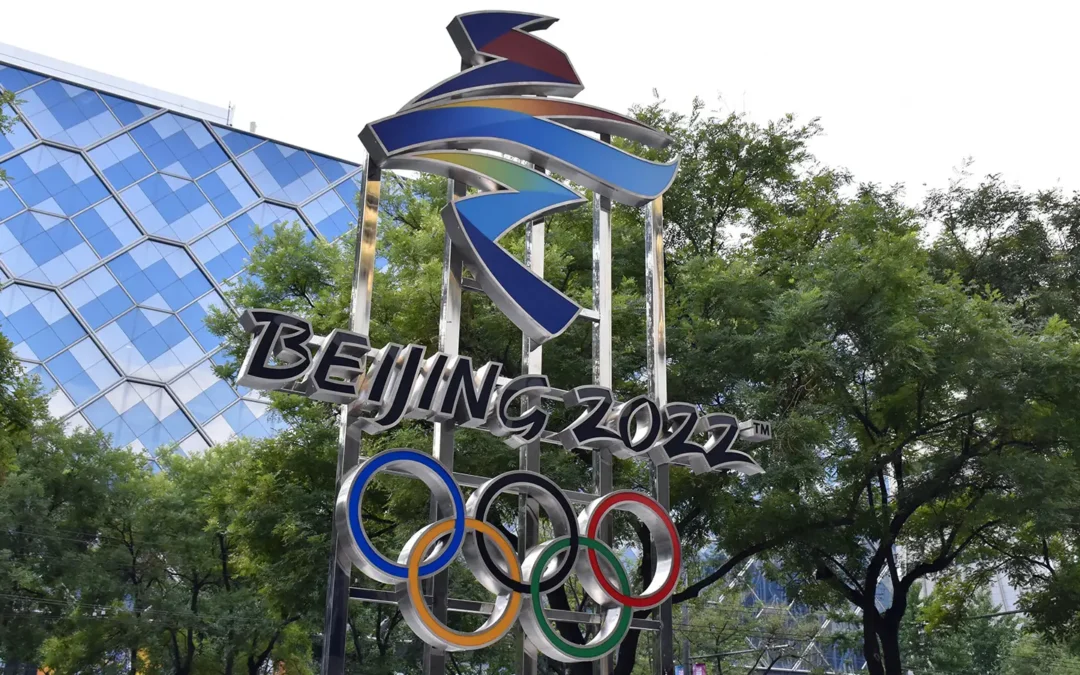Article initially published in Medpagetoday on October 7, 2021 and written by Annie Sparrow
Beijing recently announced extraordinarily strict COVID-19 restrictionsopens in a new tab or window for the 2022 Winter Olympic Games: athletes must arrive vaccinated or submit to 3 weeks of solitary quarantine, and during the Games, all participants will be isolated in a hermetically sealed “closed loop.” But this plan raises the question of whether these restrictions are effective, let alone necessary.
While the International Olympic Committee (IOC) has endorsed Beijing’s approach, the Committee also claimed success for its far less stringent approach to the Tokyo Summer Games. And a closer look at the IOC data — or the lack of it — raises real questions about whether Tokyo 2020 was the success story that the IOC trumpets.
COVID-19 Spread at the Tokyo 2020 Games
The IOC claims that its Tokyo measures — which largely assumed viral spread by large droplets and ignored spread by tiny aerosolsopens in a new tab or window — provide a model for other major international events. Brian McCloskey, MD, the IOC’s lead advisor, said that basic public health measures such as handwashing and social distancing, together with expansive testing kept the Games “safe and secure” and prevented COVID-19 transmission between international arrivals and the Japanese public.
That claim is based on a very partial release of the data emphasizing low case numbers and a test positivity rate of 0.03%opens in a new tab or window. This is supposed proof that the IOC’s Olympic “bubble” held while outside COVID-19 cases in Tokyo broke new records, averaging a positivity rate of 20%opens in a new tab or window.
However, to get to this low-positivity figure, the IOC deceptively shrank the numerator by selective reporting of positive cases and artificially expanding the denominator by counting the tests done over and over on the same participants. From July 1 to September 6, a total of 1,017,190 tests were done on 90,000-oddopens in a new tab or window Olympic and Paralympic participants — averaging 10 tests per person. Over the same time period, 888,819 tests were done on Tokyo’s 14 million residents — 0.1 tests per person.
The IOC’s final tally of 312 casesopens in a new tab or window contradicts the IOC’s parallel itemization of 875 cases — 552 Olympicsopens in a new tab or window and 323 Paralympicsopens in a new tab or window cases. The IOC does not account for the contradictory numbers. Did it decide not to count the 500-odd infected local contractors, such as the 14 Japanese police officers working security, or to exclude the 40 infected volunteers?
A different cut at the numbers tells a very different story. Despite high adherence to droplet-focused mitigation, transmission was two times greater within highly vaccinated Olympiansopens in a new tab or window than within the lightly vaccinated Japanese populationopens in a new tab or window. In Paralympians, spread was higher still. If the Olympic Village were a country, its weekly rate of 15.5 cases per 100,000 would put it well above Japan and on a par with Russia and Brazil — hardly the success story that the IOC touts.
So, what went wrong in Tokyo?
Over-Reliance on Vaccination to Stop the Spread
The IOC bet heavily on vaccines, evidenced in President Bach’s mantra that “85% of athletes in the Village would be vaccinatedopens in a new tab or window.” While vaccines were not mandatory, athletes, a low-risk group for serious illness, were heavily pressured to get vaccinated, and those who refused, heavily stigmatized. A survey of 25 countries showedopens in a new tab or window 12 teams had vaccinated at least 90% of athletes, with Italy and Spain’s teams 100% vaccinated.
Unfortunately, IOC’s health advisors forgot the fundamental purpose of the COVID-19 vaccines: to prevent symptomatic illness and more serious outcomes. This is the criterion on which they are licensed, not to stop the spread of SARS-CoV-2. Fully vaccinated people can still test positive, more commonly from subclinical infection than symptomatic infection. The IOC ignored this inconvenient truth, even when two fully vaccinated Ugandan team members tested positiveopens in a new tab or window in Tokyo in late June.
Lack of Sufficient Ventilation
Worse, it ignored the crucial fact that COVID-19 can spread through inhaling airborne microscopic particles, even though it has been well establishedopens in a new tab or window that aerosol spread is a primary route of transmission for SARS-CoV-2. Accordingly, the most effective countermeasures are ventilation, air filtration, and high-grade respiratory protection. Admittedly, upgrading ventilation systems across the Olympic Village and venues to achieve five to six air changes per hour — the minimum required for COVID-19 — is expensive. However, HEPA filters are highly effective at cleaning the air, removing not just SARS-CoV-2 particles, but also pollen, dust, dander, and chemicals. Highly portable, they can be placed in areas of high traffic and according to risk-assessment. In terms of face-coverings, 1% respirators provide all-day protectionopens in a new tab or window, in contrast to shorter-term protection from surgical masks.
Yet, the IOC only concentrated on measures directed at droplet spread: surgical masks and face coverings, plexiglass barriers, hand hygiene, surface disinfection, and social distancing of 3 to 6 feet. When it came to ventilation, IOC adopted a homeopathic approach, advising athletes to open a window.
While masking can be beneficial for short-term exposure when the proper masks are worn, none of these more prosaic measures reliably prevent the inhalation of airborne microscopic particles. COVID-19 particles can penetrate certain face-coverings, go around loose-fitting surgical masks, and circumvent plexiglass “barriers.” Air currents negate any “safe distance” indoors, and minute particles suspended in the air for hours may infect long after the source has gone. While handwashing is paramount for diarrheal diseases, its role in combatting COVID-19 is limited. And while COVID-19 seems to survive on surfaces, it cannot spread from them.
We know the virus thrives indoors, yet the IOC forced athletes to double bunk in small apartments housing 4 to 8 people, to pile into crowded buses, and to walk through closely packed corridors. Once competition began, neither masks nor minimum distances could be maintained. Indoors, pre-COVID ventilation meant that sharing air was inevitable.
The IOC’s failure to ensure COVID-19-free air is apparent. On July 15, after the first athlete tested positive, Bach insistedopens in a new tab or window there was “zero risk for athletes in the Olympic Village or for the Japanese people.” Yet within 48 hours, three Village residents tested positiveopens in a new tab or window — two athletes and an Olympic official. Even as increasing numbers tested positive, IOC pretended the numbersopens in a new tab or window were well within expectations. At least 22 athletes tested positive during the Games. In the Olympic Village — a highly vaccinated and pre-filtered population — there were 36 cases in 26 days.
Lack of Data, Sequencing, and Tracking
The IOC also fell short in monitoring and information-sharingopens in a new tab or window. The absence of any sequencing data is striking. Without genomic sequencing — identifying strains and testing for variants — there was no way to detect a variant or to know if the Olympics were a super-spreader event. The IOC’s promises of “zero risk” to Japan were unlikely to hold up to real-time genomic testing and contact-tracing. The most credible reasons for the absence are political.
The IOC has also failed to offer any analysis of the likely source of the 875 infections, and whether vaccinated asymptomatic athletes who tested positive transmitted the infection. That’s the question the IOC should have addressed and answered in Tokyo. A blanket disqualification of athletes and their partnersopens in a new tab or window as the only outcome of a positive test is not the answer.
Finally, the lack of exit testing and follow-up upon participants’ return home is deplorable, given the risk of missing positive cases since athletes had to leave within 24 hours of their last event. Variants could easily hitch rides to unvaccinated countries this way. The list provided by the IOCopens in a new tab or window is unhelpful.
The Costs of the Tokyo Approach
This approach came at the expense of dozens of disqualified athletes, their Olympic dreams dashed by the IOC’s failures. Athletes subjected to isolation describe inhumane conditionsopens in a new tab or window, deprived of fresh airopens in a new tab or window and adequate nutrition. The suspected suicideopens in a new tab or window of the Chinese coach of the Vietnamese swim team while under quarantine is unheard of — although the cause for this is still being investigated. Despite being forewarned by players’ unionsopens in a new tab or window of the significant mental health risk this posed to athletes and teams, the IOC failed to act.
These risks were foreseeable, and IOC was forewarned. After publishing a risk-management approach to the Olympics in the New England Journal of Medicineopens in a new tab or window, my co-authors and I joined several IOC meetings and wrote directlyopens in a new tab or window to the IOC President.
But to the IOC, a risk-management approach means co-opting international organizations such as the World Health Organization to share the reputational risk of its on-the-cheap approach and requiring athlete waivers as a condition of competition. Although waivers may be permissible, this should not allow the IOC to sidestep its failure to recognize aerosol transmission and put the right controls in place.
Lessons for Beijing
Next up are the 2022 Winter Olympics in Beijing. The IOC has endorsed China’s mandatory vaccination for the 2022 Winter Games, and while vaccination, like testing, is important, it is not a substitute for safe air.
Without accurate and sufficient data, which IOC has failed to provide, we can’t know whether the extreme measures planned for Beijing are any more necessary than the inadequate ones used in Tokyo. And in a controlled information environment, like that in China where the government has turned suppression of information about the virus into an art form, the IOC will only continue its irresponsible and unscientific approach.
The Olympics are meant to set the global standard, not lower it. It was the athletes — their feats of performance and acts of solidarity — that made Tokyo 2020 a success story — not the IOC’s approach. It is critical that efforts to prevent the spread of COVID-19 in Beijing are evidence-based and promote the well-being of athletes. Tokyo 2020 is not a model — except as a case study of what not to do.
Read full article on medpagetoday.com


Recent Comments